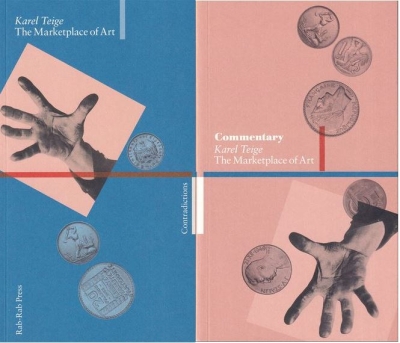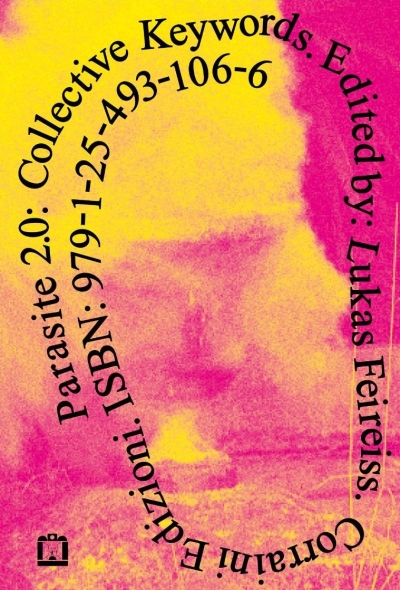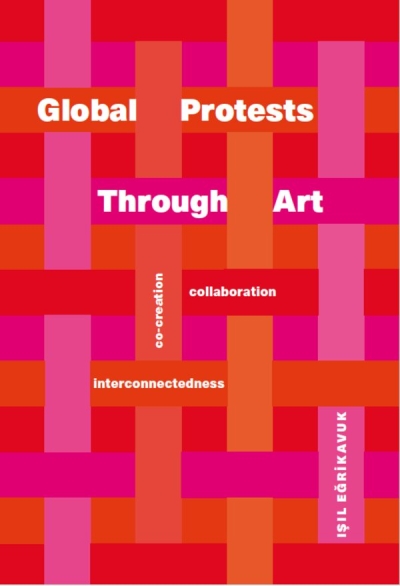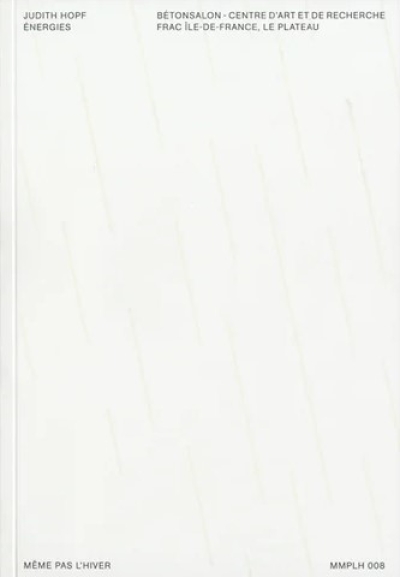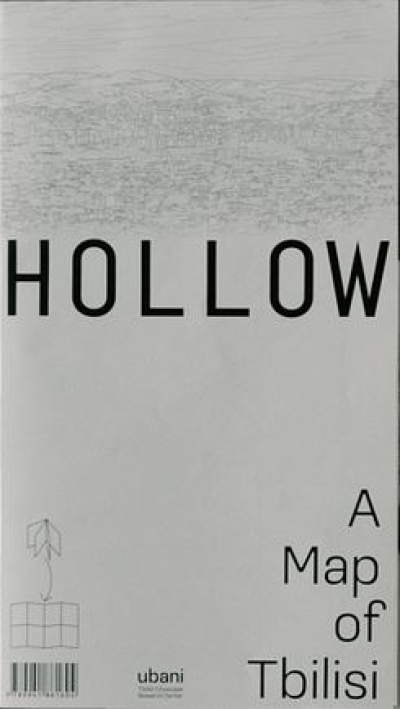Gabriel Catren
Pleromatica, or Elsinore's Trance
You Can Sit With Us
You Can Sit With Us - 24/7
Rainald Goetz
wrong
Johann Braun
Stadt von Rechts. Über Brennpunkte und Ordnungsversuche
Domitilla Dardi
Playgrounding. The playground as a symbolic form of society…
Paolo Pileri, Christina Renzoni, Paola…
Piazze Scolastiche / School squares. Reinventing the…
Kim Förster
Building Institution. The Institute for Architecture and…
Michael Marder
The Phoenix Complex. A Philosophy of Nature
Florian Heilmeyer, Sandra Hofmeister
Umbau Architektur in Flandern. Architecture of…
Andrea Baier, Christa Müller, Karin…
Unterwegs in die Stadt der Zukunft. Urbane Gärten als Orte…
Paul Wood (ed.)
Biting the Hand. Traces of Resistance in the Art &…
Sezgin Boynik, Taneli Viitahuhta (eds.)
Free Jazz Communism.
Slavoj Žižek, Rastko Močnik, Zoja Skušek
Punk Suprematism. Theoretical Writings on Punk, Nation,…
Naomi Keena, Avi Friedman
Sustainable Housing in a Circular Economy
Karel Teige
The Marketplace of Art. 2 Volumes
Lukas Feireiss (ed.)
Parasite 2.0: Collective Keywords
Riccardo Badano, Tomas Percival, Susan…
Militant Media. Centre for Research Architecture 2
Kyle Booten, D. Graham Burnett, Brian…
The Virtual Sentence: A Book of Exercises
Exhibition Politics. Die documenta und die DDR
Karsten Krampitz
Pogrom im Scheunenviertel. Antisemitismus in der Weimarer…
Thomas Irmer
René Pollesch – Arbeit. Brecht. Cinema. Interviews und…
Işil Eğrikavuk
Global Protests Through Art. collaboration, co-creation,…
Felix Sommer, SB5ÜNF
Beton & Nicht Beton
Julia Schulz-Dornburg
The Complete Guide to Combat City
Dorothee Albrecht
Assemblages of the Future
Sam Ashby (ed.)
Little Joe: A book about queers and cinema, mostly
Jürg Graser, Astrid Staufer, Christian…
Architektur Klima Atlas. Klimabewusst entwerfen in…
Charlotte Malterre-Barthes
On Architecture and Greenwashing. The Political Economy of…
Judith Hopf
Judith Hopf. Énergies
Marcus Steinweg, Sonja Dierks
Kafka
Onur Erdur
Schule des Südens. Die kolonialen Wurzeln der französischen…
Michael Marder, Giovanbattista Tusa (…
Contemporanea. A Glossary for the Twenty-First Century
dérive
dérive N° 95, Sampler (Apr-Jun 2024). Zeitschrift für…
Vladimir Guculak, Paul Bourel
Sh*tscapes. 100 Mistakes in Landscape Architecture
Fulya İLBEY
CONSTRUCTIVE MANIPULATIONS™ FOR STRATEGIC RESILIENCE
Alan Smart, Jack Henrie Fisher (ed.)
Counter-Signals 5. Systems and their Discontents
Silke Kapp, Mariana Moura (ed.)
Sérgio Ferro. Architecture from Below. An Anthology
Daniel Loick
Die Überlegenheit der Unterlegenen. Eine Theorie der…
Víctor Aguado, Ramón del Buey, Brandon…
Party Studies Vol. 2. Underground Clubs, Parallel…
Nina Dragičević
Auditory Poverty and its Discontents – An Essay
Iracema Dulley, Özgün Eylül İşcen (eds)
Displacing Theory through the Global South
Karoline Mayer, Katharina Ritter,…
Über Tourismus
Ubani. Tbilisi cityscape research center
Hollow. A Map of Tbilisi
Bernd Stiegler
Bildpolitiken der Identität. Von Porträtfotografie bis zu…
Chris Kraus
Ehrgeiz, Demut, Glück. Texte zu Kunst und Freundschaft
Laboratory EAST
Studies on Assemblies: Mass Made Units.
Tom Holert
„ca. 1972” Gewalt – Umwelt – Identität – Methode
Nadejda Bartels (Hg.)
Alvar Aalto in Deutschland: Gezeichnete Moderne / Alvar…
Tchoban Foundation
Sauerbruch Hutton. Drawing in Space
Derek McCormack
Judy Blame's Obituary. Writings on Fashion and Death
Corinne Cath
Eaten by the Internet
Nike
After All, there is No Finish Line
ECCHR
Beyond Limitations. Wolfgang Kaleck, Tomas Saraceno
ECCHR
Challenging Corporate Power. Gearoid O Cuinn, Miriam Saage-…
Jeanne Gang
The Art of Architectural Grafting. Usefulness and Desire in…
Jochen Eisenbrand
Transform! Designing the Future of Energy
Adam Gibbons, Eva Wilson
Abbas Zahedi in conversation with Eva Wilson "" #7
Kevin Yuen Kit Lo
Design Against Design. Cause and consequence of a…
Timon Beyes
Organizing Color. Toward a Chromatics of the Social
Eric Drott
Streaming Music, Streaming Capital
Francois Laruelle
Phenomenon & Difference. Essay on the Ontology of…
Mohammad Salemy (ed.)
Model Is the Message. Incredible Machines Conference 2022
Joshua Comaroff, Ong Ker-Shing
Horror in Architecture. The Reanimated Edition
Armen Avanessian, Daniel Falb
Planeten Denken. Hyper-Antizipation und Biografische…
Achim Szepanski
Die Ekstase der Spekulation. Kapitalismus im Zeitalter der…
Arch+ Zeitschrift für Architektur und…
Arch+ 254. Klaus Heinrich - Dahlemer Vorlesungen: Giovanni…
Florian Reischauer
Pieces of Berlin 2019-2023
Tim Carpenter
To Photograph is to Learn How to Die
Oxana Timofeeva
Solarpolitik. Ein philosophischer Essay über die Sonne,…
Hans-Christian Dany
Schuld war mein Hobby. Bilanz einer Familie
Andreas Weber
Indigenialität
Achim Szepanski, Force Inc. / Mille…
In the Delirium of the Simulation: Baudrillard Revisited by…
Never Sleep (Ed.)
Archivio #1 - Records Store Ads & Paper Ephemera From…
Diedrich Diederichsen
Das 21. Jahrhundert. Essays
Redaktion Protocol
Protocol 14. Nonkonforme Architekturpraxis
Markus Miessen (Ed.)
Agonistic Assemblies. On the Spatial Politics of…
Christoph Ramisch (Ed)
Daidalos Nr 22-23
Hella Gerlach
Gelenkstellen - Loose Joints
Grant H. Kester
Beyond the Sovereign Self. Aesthetic Autonomy from the…
Jana Müller
Jana Müller. Falscher Hase / Mock Rabbit
Francois Dupuis-Déri, Benjamin Pillet (…
Anarcho-Indigenism. Conversations on Land and Freedom
Editors for this issue: Ariane Müller,…
Starship 20
Moises Puente (Hg.)
2G 90. Johansen Skovstedt
Achille Mbembe
Brutalism
Léa Perraudin, Clemens Winkler, Claudia…
Material Trajectories. Designing With Care?
Chus Martínez
The Complex Answer. On Art as a Nonbinary Intelligence
Kader Attia, Anselm Franke, Ana…
The White West: Fascism, Unreason, and the Paradox of…
Marion von Osten (Aut), Lucie Kolb,…
Material Marion von Osten 1: MoneyNations
Aleksandra Kędziorek, Katarzyna…
CIAM ARCHIPELAGO. The Letters by Helena Syrkus
Anna Kornbluh
Immediacy, Or, The Style of Too Late Capitalism
Georgina Voss
Systems Ultra. How Things, People, and Ideas Connect in a…
Piet Eckert, Wim Eckert (Hg.)
Ontologie der Konstruktion. Raumwirkung in der Architektur
Gabrielle Schaad, Torsten Lange (eds.)
archithese reader: Critical Positions in Search of…
Kersten Geers, Jelena Pancevac (eds.)
Giancarlo de Carlo. Experiments in Thickness
Lauren Berlant
Grausamer Optimismus
Robert Klanten, Mario Depicolzuane (Hg.)
Designing Brands. A Collaborative Approach To Creating…
Joanna Zylinska
The Perception Machine
Alessandro Ludovico
Tactical Publishing















